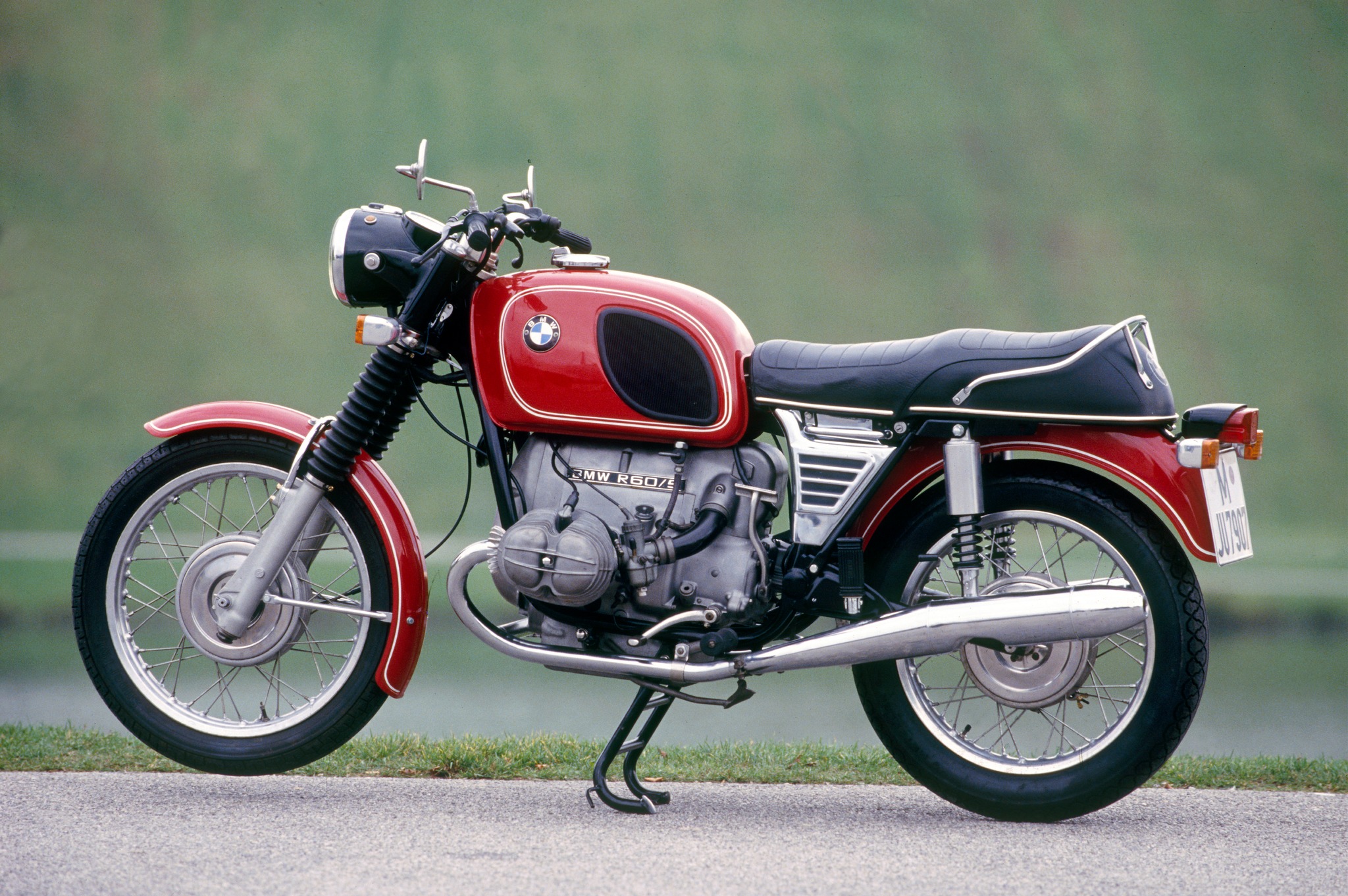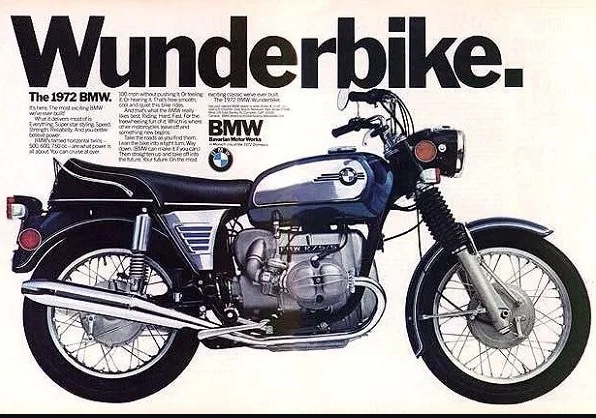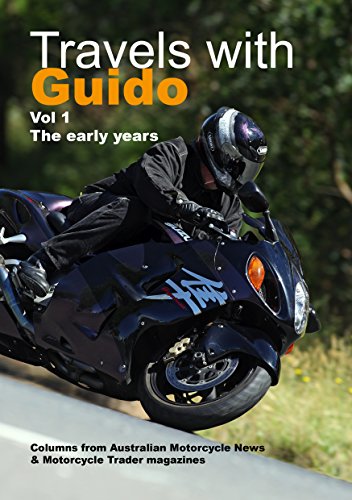Motorcycle Investor mag
Subscribe to our free email news
BMW /5 series
(by Ian Falloon, Mar 2022)

Times were
tough for European motorcycle manufacturers during the
1960s. The Japanese already dominated the smaller
capacity market and their success in Grand Prix racing
enabled them to expand their horizons.
Although
they concentrated on producing motorcycles over 250cc
the survival of British and European manufacturers was
threatened. Built with up-to-date machinery, these new
mass-produced Japanese motorcycles offered class-leading
performance, and were cheap and reliable.
While
motorcycle sales sustained BMW early in the 1960s, by
1963 BMW’s new range of cars was more successful and
profitable. Fortunately, in face of serious opposition,
technical director Helmut Werner Bönsch managed to
persuade BMW’s directors to sanction a pilot scheme to
develop a replacement for the /2. With an internal
designation of Type 246 this became the /5, a series of
air-cooled boxer twins that would sustain BMW until
1996.
The new engine differed
significantly in detail and execution to the previous
/2 and was very automotive inspired. Instead of a
pressed together roller bearing crank with the
camshaft above, the crankshaft was a one-piece forged
crankshaft type running in plain main bearings. The
con-rods and bearings were straight out of the 1600cc
BMW car. The single camshaft was now located below the
crankshaft, and the pushrods below the cylinders,
tidying the look of the engine.
The /5 was
produced in three capacities; 500cc, 600cc, and 750cc,
and each was ostensibly identical but for the capacity.
Compared to most other
motorcycles of the day the R75/5 was a user-friendly
machine. A 180 Watt auto style alternator powered the
electrical system, a strong starter motor sat on top
of the crankcase, and a fully enclosed shaft drive
simply made life easy for those interested in high
mileages.
Long before
noise and emission regulations were enforced the /5
incorporated an integrated air filter and engine
breather system. Also new for the R75/5 was a set of
32mm Bing constant vacuum carburettors.
Producing a
modest 50 horsepower at 6200 rpm the four-speed R75/5
was still a respectable performer, capable of around 175
km/h.
With a
“Featherbed” style frame, short swingarm, and telescopic
front fork, the /5 chassis also represented a
considerable departure from previous BMWs. Designer Von
der Marwitz believed too much frame stiffness was
detrimental for a street motorcycle, bolting the
subframe onto the main frame section.
The long travel suspension gave a supremely plush ride for the day but the /5 never earned a reputation for sharp handling. Another area of criticism was the brakes. Although other Superbikes were moving to disc brakes, discs were untried on BMW motorcycles so the /5 had traditional drum brakes.

Even the
Germans are prone to irrational behaviour and after two
years BMW decided the R75/5 was too staid for the US
market. Although they left the engine and chassis as
before the fuel tank was downsized to 17 litres, chrome
side panels added, and matching chrome plated side
battery covers installed.
The 1972
R75/5 soon earned the nickname “Toaster” tank because of
its similarity in appearance to the kitchen appliance.
But not all markets greeted the “Toaster” fuel tank with
unequivocal acclaim.
After sales
stalled here in Australia the /5 was sold with the
earlier-style larger tank as standard, and BMW Great
Britain followed suit later in the year. Market
resistance to the gaudy “Toaster” tank outside the US
led to BMW returning to their more traditional
conservative styling during 1973 but the chrome
“Toaster” tank was still fitted to many US models.
With nearly 69,000
produced over four years, the /5 series re-established
the BMW motorcycle tradition. Offering unparalleled
touring comfort and reliability these are still viable
useable motorcycles. Many spare parts are available,
now remanufactured by BMW Mobile Tradition, and the /5
is one of the bargains of the classic bike world.
-------------------------------------------------
Produced by AllMoto abn 61 400 694 722
Privacy: we do not collect cookies or any other data.

Archives
Contact





